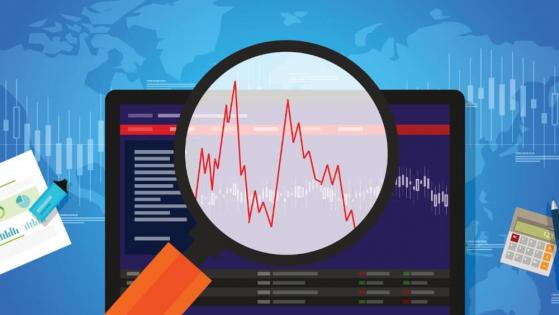The trick to good returns is to buy the dip and sell the rally. This dip and rally is nothing but volatility. Often the stock market volatility is misunderstood with risk. I don’t deny that volatility brings risk, but there are two types: good and bad volatility.
Types of volatility Good volatility brings opportunities to buy the dip and earn significant returns, whereas bad volatility brings downside risk. If you learn to capitalize on volatility, you could make some good returns on your portfolio. Many technical indicators measure volatility and help you make a calculated guess on where the stock might head next. I said “guess” because there is no way you can predict a stock price with accuracy.
The four volatility measures I use are as follows:
- Beta
- Trading volumes
- Relative Strength Index (RSI)
- Support and resistance levels
For instance, Enbridge (TSX:ENB)(NYSE:ENB) has a beta of 0.92 and Lightspeed Commerce (TSX:LSPD) of 2.97. The TSX Composite Index and Enbridge stock surged 23% and 24%, respectively, whereas Lightspeed stock fell 15.5% year to date. The higher the beta, the higher the volatility. Now, the trick is to determine whether this volatility is good or bad.
Good volatility versus bad volatility High-volatility stocks are good for short-term trades (less than a year), whereas low-volatility stocks are good for a buy-and-hold strategy. Enbridge is a stock that you buy and forget. It has strong fundamentals, assured cash flows, a 26-year dividend-growth history, and market leadership.
Good volatility is when a stock rises in an uptrend but stays steady in a downturn, as long-term value investors hold a fundamentally strong stock. They grab this opportunity to buy the dip, driving the stock price to new highs. Bad volatility is when the stock rises in an uptrend and crashes in a downtrend, like Air Canada.
Descartes Systems (TSX:DSG)(NASDAQ:DSGX) is in a long-term uptrend with a beta of 1.04. In its five-year history, the stock has surged 279%. There have been dips, but the rally that followed pushed the stock to a new high. This is good volatility, as any dip is an opportunity to buy and increase returns.
Enbridge is relatively stable, with the stock price down 8.7% in the last five years. Its stock price is range-bound, as it does not rally beyond $51. Even if it does, the stock price does not stay at that level for long and sees a correction. Even this is a form of good volatility, as a rally follows at some point.
How to make money in good-volatility stocks For good-volatility stocks, RSI and support and resistance levels tell you the entry and exit price. RSI tells you whether the stock is overbought (above 70) or oversold (below 30). When a stock like Enbridge or Descartes is oversold, it is time to buy. At present, the two stocks are trading normally (RSI of 42-47), which means they might either rise or fall.
That is when the support level comes in. A support level is where the decline is expected to stop and demand to start accumulating. You gauge the support level by looking at the past few years’ trends and mark a price that the stock has hovered around in past downturns. This is a level beyond which the stock didn’t fall. As per my analysis, Enbridge has a support level of $39-$40. The opposite of support is resistance, and Enbridge’s resistance level is $51.
The stock is trading normally and could surge up to $53 (a 4.6% upside) or fall to $44 (a 13% downside). Holding is the best strategy for this stock at the moment.
The post Investing 101: Good Volatility vs. Bad Volatility appeared first on The Motley Fool Canada.
Fool contributor Puja Tayal has no position in any of the stocks mentioned. The Motley Fool recommends Enbridge and Lightspeed POS Inc.
This Article Was First Published on The Motley Fool
